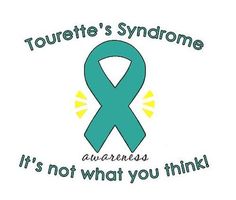 "Are you sure?” I asked my daughter before writing this column.
"Are you sure?” I asked my daughter before writing this column.

08/20/2015
Earlier by Michelle Malkin: Every Breath She Takes
 "Are you sure?” I asked my daughter before writing this column.
"Are you sure?” I asked my daughter before writing this column.
"Yes," she said resolutely.
Veronica is profoundly grateful for all the prayers, kindness and advice from strangers, friends and family alike that she received earlier this summer when I first told you about her plight. We hope sharing the rest of her story can help pay it forward in some way.
In May, she stopped breathing normally. Describing the condition in words cannot adequately capture how torturous it was: She felt "air hunger" with every inhalation. At first, it looked and sounded like a gentle sigh. But the small gasps soon morphed into a horrible "stridor," up to 30 to 40 times a minute, every minute, every hour, every day.
As we faced agonizingly long wait times to see doctors, we turned to crowdsourcing and CrowdMed.com. We heard from many other parents of children with mystery ailments and chronic illnesses on similar all-consuming searches for answers. Was it anxiety? Vocal cord dysfunction? A pulmonary embolism? Lyme disease? Food allergies? Along the never-ending journey, Veronica was diagnosed with postural orthostatic tachycardia syndrome and joint hypermobility, which led to an inconclusive side investigation into Ehlers-Danlos syndrome.
The days and weeks passed in slow motion. Veronica remained bedridden. She lost sleep. She lost friends. She felt "like a zombie" and battled "brain fog." An aspiring doctor, she had to quit her volunteer job at a local hospital’s oncology ward. Instead, she spent the summer as a patient in a blur of medical clinics and diagnostic labs, shuttling between experts in cardiology, pulmonology, rheumatology, genetics and neurology.
Some of the more creative interventions were cause for family amusement — inhaling helium and blowing bubbles, for example. And then there were the drugs. The ones that made her gain weight and lose weight. The ones that gave her heart palpitations and hyperactivity. The ones that caused painful backaches, scary tremors, intermittent numbness, fainting and memory loss.
In the end, the "mainstream" medications she was prescribed did little to nothing to alleviate the gasping episodes. (What eventually did provide relief is an entirely separate story.)
Two months after the daily daymares started, in early July, Veronica was finally weaned off the last of her "traditional" meds. The gasping episodes waned, but never disappeared. Instead, they morphed into an extreme combination of other motor and vocal tics: blinking, eye-rolling, grimacing, throat-clearing, coughing, neck-stretching and head-jerking. We had seen some of these symptoms when she was younger, but never so severe. Now, the dots were all connected. After hoping and praying for an easy cure, a quick fix or a magic pill for our bright and beautiful 15-year-old girl, we embraced what several hundreds of thousands of families across the country confront every day with every breath:
This is what Tourette syndrome looks like.
When she’s in an enclosed space, like an elevator or a quiet classroom, Veronica feels suffocated. Strong odors, loud noises or rude people can trigger an uncontrollable wave of ticking. Even if she’s able to temporarily suppress the "urge," some form of tic comes back with a vengeance later. There are other "comorbidities": migraines and OCD. She is still fighting chronic fatigue that is interfering with "normal" life. There are many more tests and doctors' appointments to come.
Like other Tourette kids, Veronica wants people to know that it’s not a "cursing disease," as Hollywood and YouTube have mercilessly mocked the syndrome. It’s not something you do on purpose. It’s not like having an occasional muscle spasm in your eye or leg.
Many TS kids are fortunate enough to outgrow their symptoms. Many more do not. As soccer star Tim Howard, who was diagnosed with TS in elementary school, wrote in his autobiography last year, "TS looks different in everyone who has it — I’ve heard it called a "fingerprint condition," and that’s exactly right. No two people have the same case."
There are good days, bad days and still a whole lot of uncertain days. But knowing that there are families with children suffering far worse, we are grateful for every day. Veronica has shown us how to face our fears instead of hiding from them — and how to persist, not just subsist.
While most students dread going back to school, she wanted more than anything else to return to the classroom with her peers, even if it meant exposure of her tics to kids who can be cruel and ignorant. In her math period, she told me this week, she started gasping loudly. Dozens of pairs of eyes fixed on her. She excused herself, listened to some soothing music on her iPhone in a restroom for a few minutes and bravely walked back into class.
"Are you sure you still want to do this?” I asked.
"Yes," she said resolutely.
Michelle Malkin is the author of Invasion: How America Still Welcomes Terrorists, Criminals, and Other Foreign Menaces to Our Shores. Click here for Peter Brimelow’s review. Michelle Malkin is also author of Unhinged: Exposing Liberals Gone Wild and Culture of Corruption: Obama and his Team of Tax Cheats, Crooks & Cronies.
Her latest book is "Who Built That: Awe-Inspiring Stories of American Tinkerpreneurs."
This is a content archive of VDARE.com, which Letitia James forced off of the Internet using lawfare.